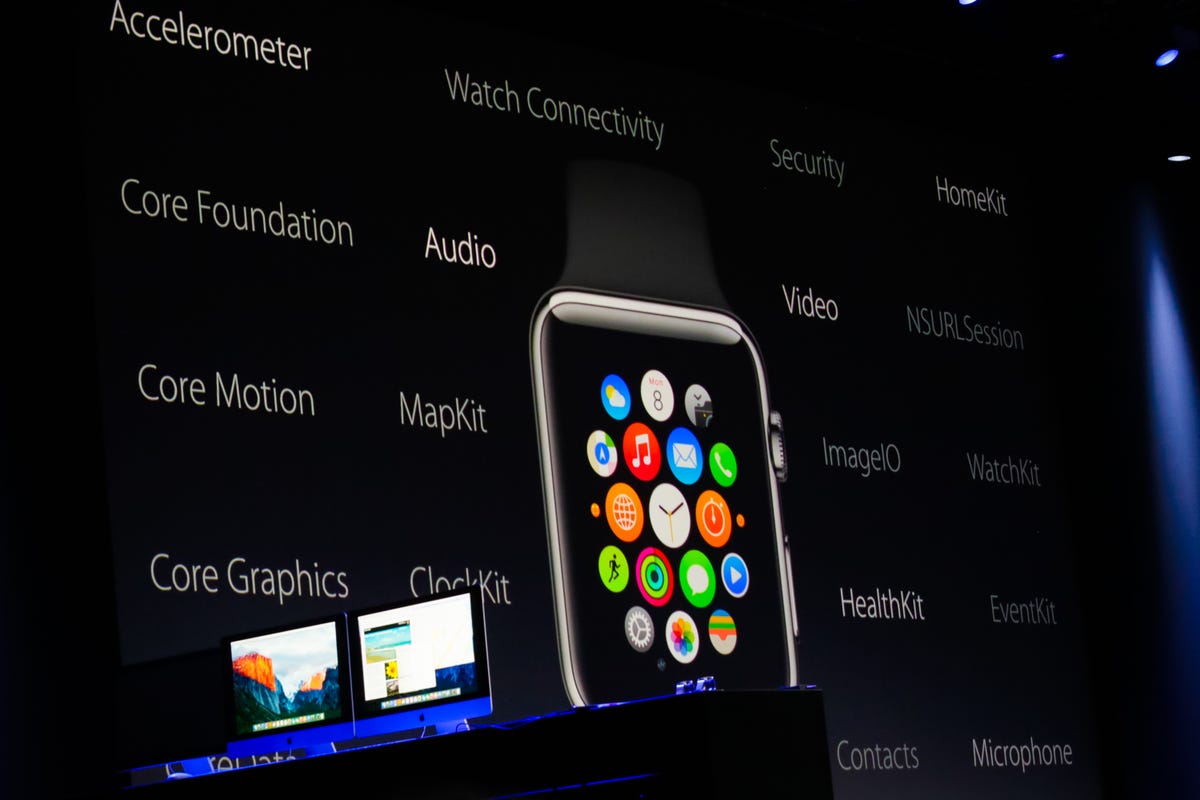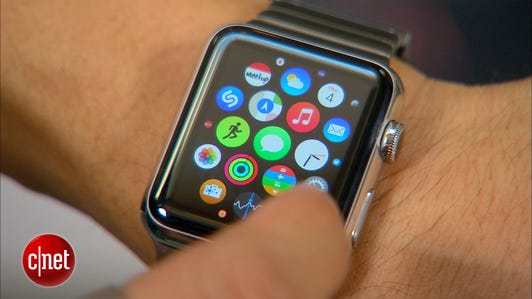This story is part of WWDC 2022, CNET’s complete coverage from and about Apple’s annual developers conference.

James Martin/CNET
Apple is hoping time repeats itself with the Watch.
While the original iPhone turned heads when it first debuted in 2007, it didn’t become a world-beating mobile device until the following year, when Apple launched its App Store and made it dead-simple for anyone to download games and programs onto their smartphone. The iPhone went from a slick-looking smartphone that could make calls, play music and videos, and browse the Internet to a device that could do virtually anything developers imagined.
Related stories
- Apple believes smarter services, devices won’t compromise your privacy
- Apple Watch to get faster, smarter apps with new Watch OS
- Apple remixes Beats Music, iTunes Radio as Apple Music
- Apple unveils iOS 9 at WWDC, with a ‘proactive’ Siri and smarter Maps
Apple has ambitions that the same kind of radical transformation will occur with the Apple Watch , which will get access to native applications that can fully take advantage of the wearable device and its capabilities with the next version of its Watch OS software.
“For us this is a giant moment,” said Apple CEO Tim Cook during the company’s annual developer conference on Monday. “This is how we felt when we launched the App Store.”
By empowering developers to create more robust applications, Apple is creating the foundation for making the Watch more than just a watch. Notifications and quirky watch faces aside, one of the early knocks on Apple Watch is that it hasn’t been able to do anything useful enough to justify the cost (it ranges between $349 and $17,000). But like the App Store transformed the iPhone, the rise of native apps on Watch could foster the next killer app — something innovative and useful that will have you running out to buy the wearable.
“Opening up native apps and access to the Watch hardware and software features to developers will make a huge difference,” said Jan Dawson, an analyst at Jackdaw Research. “Third-party apps are key to mainstream adoption of the Apple Watch and what Apple announced this week will finally make really compelling third-party apps possible.”


Now playing:
Watch this:
Apple WWDC 2015: Everything you need to see
4:53
Apple Watch’s success could have ripple effects on the broader market. While a myriad of tech companies ranging from Samsung to LG have barged into the wearables, few have really taken off. Google’s platform for wearables, Android Wear, has struggled since its launch, with market research firm Canalys reporting vendors collectively shipped only 720,000 units last year out of a total 4.6 million wearables. Motorola’s Moto 360 is widely believed to be at the head of the Android pack.
Many analysts believe Apple’s smartwatch will change things. Forrester Research expects Apple to sell more smartwatches in 2015 than any of its rivals have cumulatively sold, include fitness companies like Fitbit that have been selling trackers for years. At the same time, Apple Watch could provide a lift in awareness and interest that could drive sales for the rest of the category.
Market researcher Strategy Analytics forecast in March that Apple will ship 15.4 million Apple Watch units in 2015, giving the company 54.8 percent of the global smartwatch market. All other smartwatch makers combined will ship just 12.7 million units in 2015, according to the forecast. Strategy Analytics believes the Apple Watch will ignite the wearables space, saying total worldwide smartwatch shipments will jump 511 percent, from 4.6 million in 2014 to 28.1 million this year.
Apple didn’t share any sales figures at the developer conference, and said it wouldn’t be breaking them out.
A big, fat, uniform target
When Apple Watch hit the market in April, it wasn’t wholly without apps. In fact, there were 3,500 available. On paper, that fared considerably with the 4,000 apps developed for Android Wear since the software was released a year ago.
But the third-party apps developed for Apple Watch’s early run actually ran on the iPhone, which is paired with the smartwatch via Bluetooth. That resulted in a frustratingly slow experience for users trying to take full advantage of an app.


James Martin/CNET
With Watch OS 2, Apple said it would let developers build apps that lived in the Watch itself, as well as take advantage of the device’s motion sensor, haptic feedback engine, microphone, digital crown and other components.
“That gives developers a pretty rich playground to work with,” said Avi Greengart, an analyst at Current Analysis.
Apple’s two advantages with its iOS software has been a consistent product to develop for and the sheer number of users on the platform. The company has a similar advantage on the Watch.
With Android Wear, there are a number of different vendors with unique smartwatch screen sizes, capabilities and components. Despite the variation on price and materials, the Apple Watch offers a consistent product and experience, with the only deviation being two available sizes.
If the sales estimates ring true, Apple will also have command of the wearables market, giving developers a good reason to stick with Watch OS as their main platform.
“With Apple Watch, Apple is repeating its playbook, and it’s a very effective playbook,” Greengart said. “Apple is giving developers a big, fat, uniform target to hit.”
Making up for a “botched” start
Watch OS 2 will also come with a number of additional bells and whistles, including the ability to send email replies, watch short videos and take FaceTime audio calls. You can use Siri to start a workout, or take advantage of the expanded Apple Pay feature, which will include rewards programs. It will also be able to take advantage of the improved Apple Maps, which will come with transit directions, and a Time Travel feature that lets you fast-forward or rewind your day’s schedule.
The enhancements are a positive because they legitimize the category beyond Apple’s brand recognition. These are features that will or are already on Android Wear devices, the attention Apple Watch gets could trickle down elsewhere.
New features coming to Apple Watch






+32 more
Unfortunately, the improvements aren’t coming right away. While Apple released a developer version on Monday, Watch OS 2 won’t be made available until the fall.
The improvements come after a rough start to Apple Watch. It experienced long shipping delays, with wait times for the device, which initially was only available for purchase online, stretching into July the first day preorders started. Research firm Slice Intelligence in April estimated only 22 percent of US customers who preordered the Apple Watch received their devices in the first weekend it was available.


Apple
UBS analyst Steven Milunovich in early May said Apple had “somewhat botched the Watch introduction.” That was largely because the company didn’t start selling the device until April, supply issues caused long wait times for early buyers, and “the buzz has been reduced by requiring appointments and by the inability for now to take watches home from Apple Stores,” he said.
Apple said last week that the Apple Watch would be available in its brick-and-mortar retail stores within two weeks. And the company said all orders — except for one model — placed through May in the online store will ship to customers within two weeks. In addition, Apple said it was expanding the availability of Apple Watch to seven more countries, including Italy, Mexico, South Korea, Spain and Taiwan starting June 26.
All of the early hiccups will be meaningless if Apple can drive the same kind of mainstream success that the iPhone enjoyed after the App Store debuted. But whether a developer can come up with that killer app to drive demand remains to be seen. Apple is optimistic.
“We can’t wait to see what you do with Watch OS,” Cook said.
Cracking the Easter eggs in Apple’s WWDC opener (pictures)






+25 more



